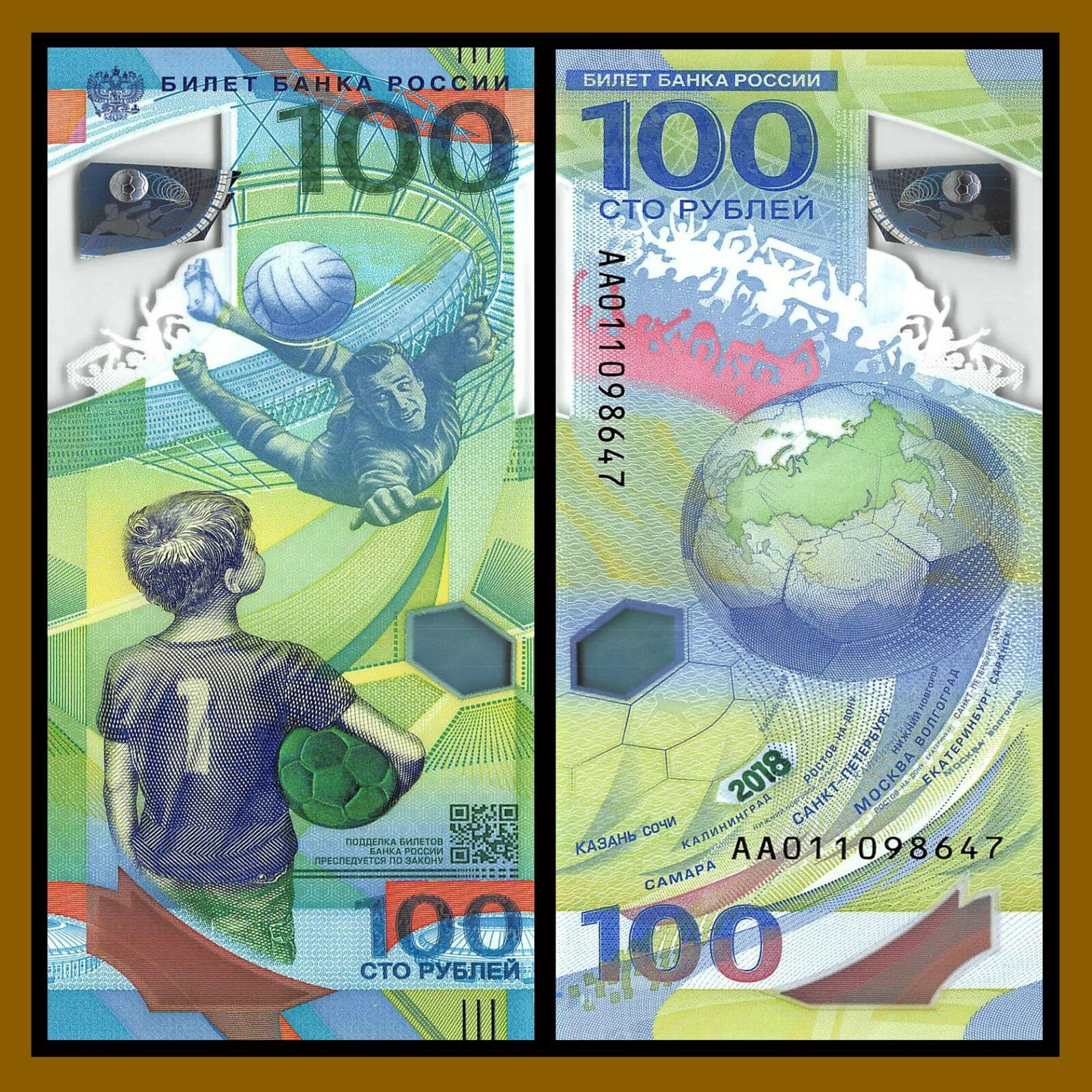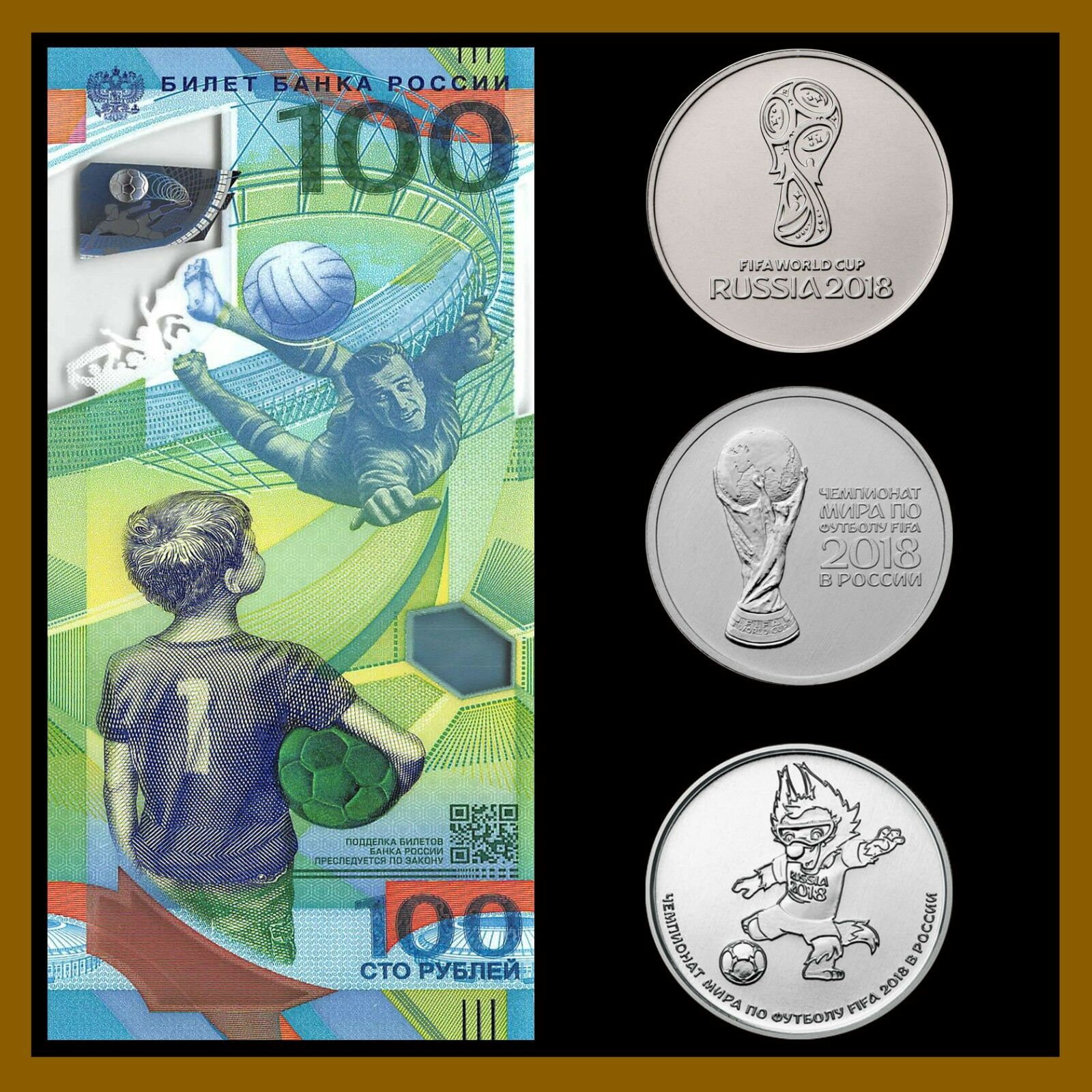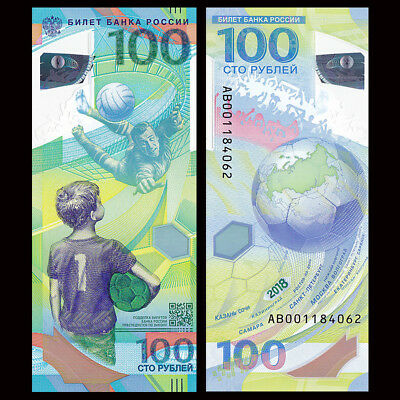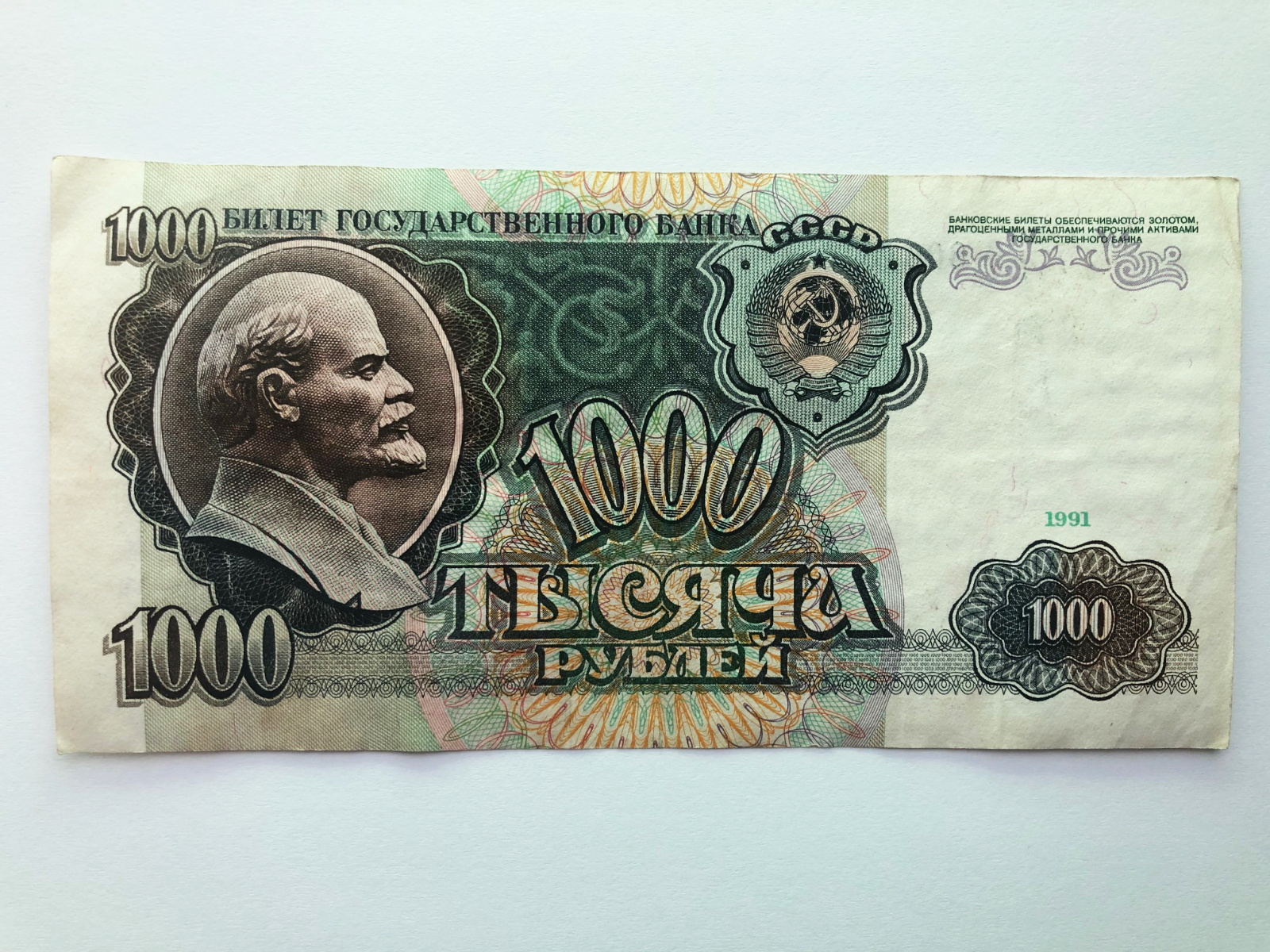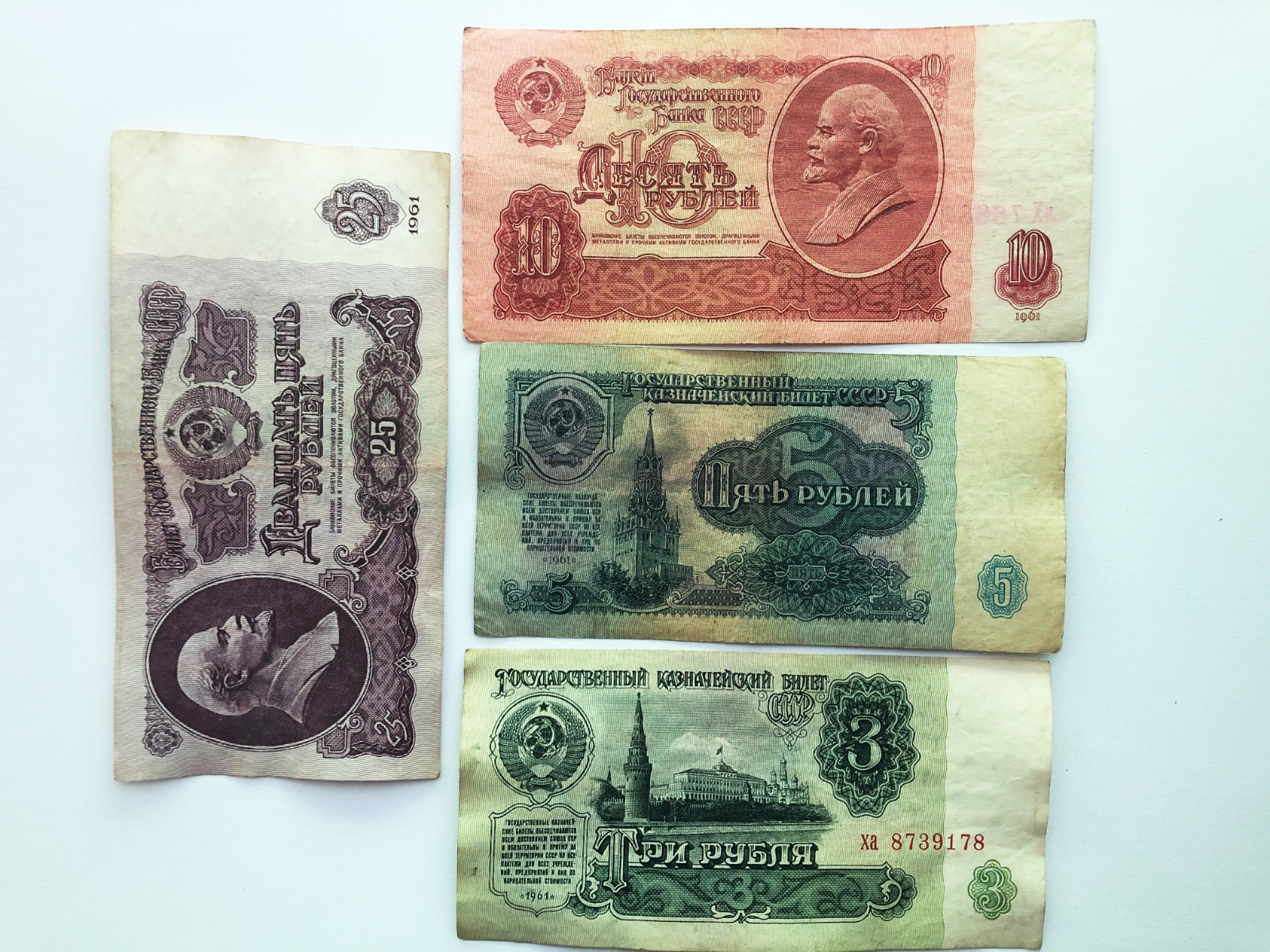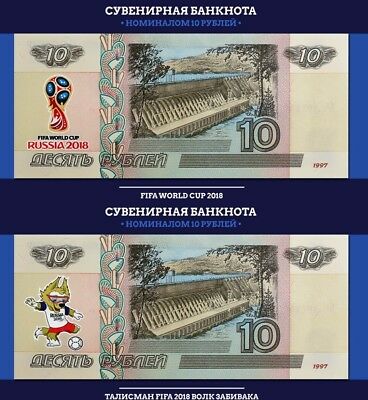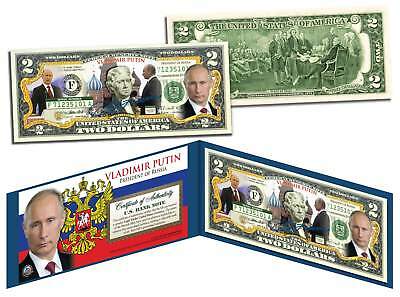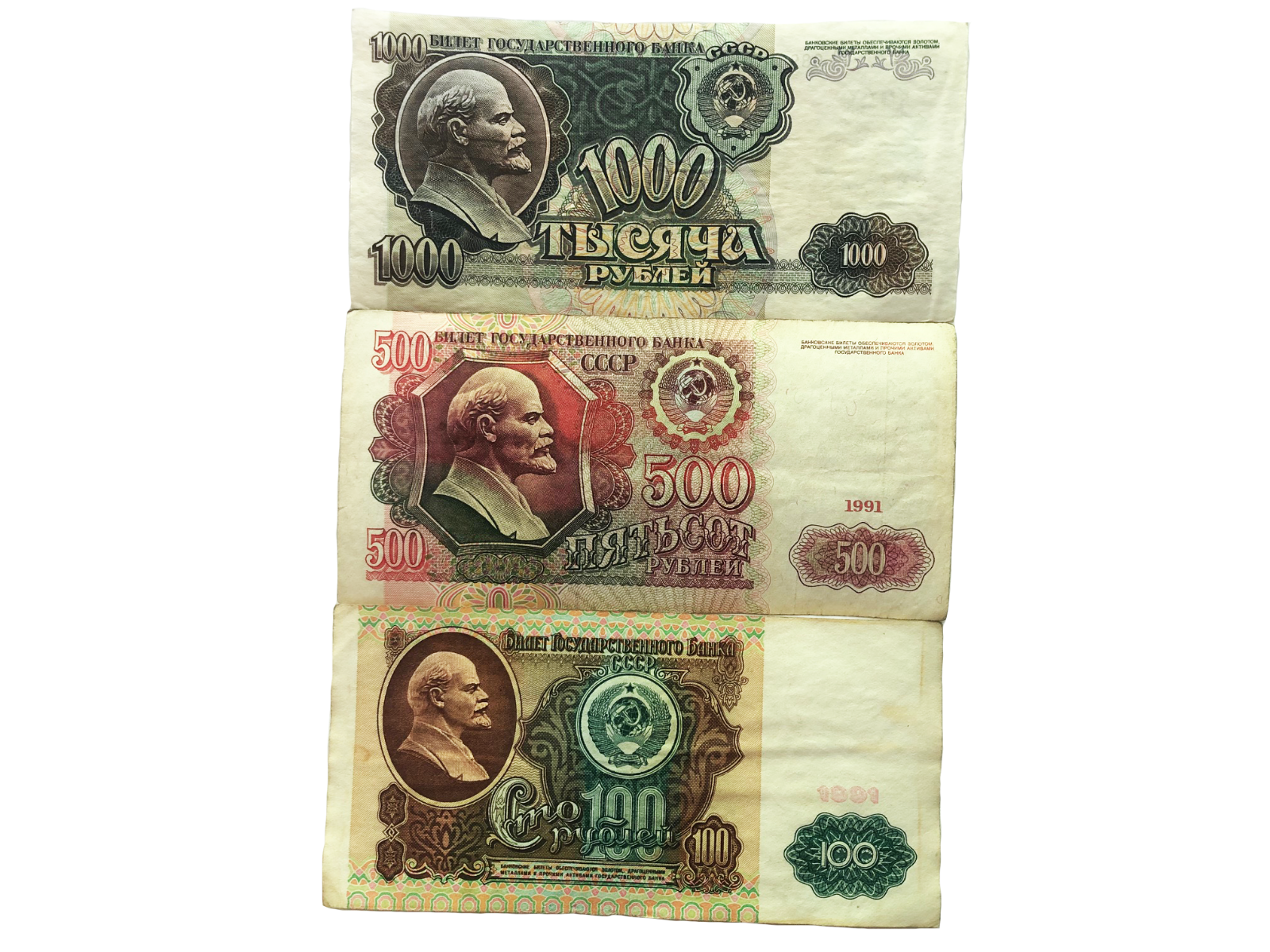-40%
USSR Currency "Pavlov Reform" High Value Notes Series 1991 Roubles 50 -1000 VG+
$ 0.52
- Description
- Size Guide
Description
USSR "Pavlov Reform" High Value Ruble Series 1991What You See Is What You Get
Lot R810: Six piece authentic Soviet Union
Cold War Era lot,
complete 1991 Series of high value banknotes. You get:
(1x) 5
0 Roubles - Bust of Vladimir Lenin (facing
right
), replaced series 1961 notes.
(1x)
100 Roubles -
Bust of Vladimir Lenin (facing
right
)
, replaced series 1961 notes.
(1x) 100 Roubles - Bust of Vladimir Lenin (facing right) with guilloche, replaced series 1961 notes.
(1x) 2
00 Roubles -
Bust of Vladimir Lenin (facing
right
), new issue.
(1x) 5
00 Roubles -
Bust of Vladimir Lenin (facing
right
)
, new issue.
(1x)
1000 Roubles -
Bust of Vladimir Lenin (facing
right
)
, new issue.
The notes are as pictured, usual circulated conditions; light surface dirt/notations, edge wear, otherwise crisp, sound, and
no
funky aroma! Conditions G/F. Comes in re-closable 2mil pouch for long term storage and preservation. What you see is what you get. Makes a nice gift pack for the Old Cold Warrior, student, educator, or history buff in your life!
Thanks for Looking!
Please see my
other items
for more Soviet, Third Reich and other German items.
FREE DOMESTIC U.S. SHIPPING
Q: What am I buying, and why would I want it?
A: The notes are from the former Soviet Union and were issued in 1991, in the final days of the USSR. They were
demonetized and
withdrawn from circulation in 1993. The picturesque collection is a memento of a time not so very long ago when Humanity stood on the precipice of nuclear extinction, and when an "Evil Empire" which had murdered tens of millions, fell almost bloodlessly. You will hold history in your hands
.
These bills are from the Soviet 1991 series of banknotes. The 1991 currency reform was the seventh, and final, monetary reform of the USSR. It was named for its architect, the (then) Soviet Minister of Finance, and (future) Prime Minister, (and future coup conspirator,) Valentin Pavlov. (He was a busy guy.)
In a socialist republic of Workers and Peasants, that was supposed to equitably distribute the USSR's collective wealth according to the "iron scientific laws" laid down by Karl Marx, the Soviet government had the odd habit of regularly debauching its currency, and defrauding those very same Workers and Peasants.
Inflation and mismanagement of the command economy routinely ruined the ruble. In most cases the government would issue new notes in exchange for old at 10:1, 100:1, or even more ghastly rates; make a few minor price adjustments to food and housing costs; and maybe lower a tax or two, but they would largely leave pay rates alone, thereby sticking the Workers and Peasants with the costs of the inflation. That these economic "shock adjustments" would regularly pauperize the proletariat didn't seem to matter much to the Comrades in the Kremlin, because that's what they had intended to do. Such was the cost of maintaining socialist equality, equitably.
By late 1990, Soviet inflation pressures could no longer be ignored. The amount of excess cash sloshing about in the economy, the 'overhang,' was estimated at being over 80 billion rubles. Driven by relentless, hidden, deficit spending, the ruble was becoming increasingly worthless by the day. The chosen solution was shock treatment and so the Pavlov Reform was launched, with the hope of withdrawing all those inflated rubles from the economy.
The announcement of Mikhail Gorbachev's presidential decree authorizing the reform was made at 9 o'clock in the evening of 22 January 1991. It gave the people a seventy-two hour window in which to exchange their 1961 series 50 and 100 ruble notes for notes of the new 1991 design; and then, only for a maximum of 1,000 rubles per person, provided that one could find someplace that had enough new cash on hand to perform a full exchange!
The reform, the government said, was undertaken to: reorient investment towards the consumer economy; reign-in ill gotten gains and stop tax evasion; end rampant ruble smuggling (allegedly conducted by foreign espionage agents); and to prevent pervasive forgery (also allegedly the work of enemy intelligence). In reality, it was an ill-disguised revaluation of the ruble, and it failed, miserably. This failure was a contributing factor to the coup which briefly overthrew Gorbachev in August of 1991, and hurried the ultimate demise of the Soviet Union in December of that year.



